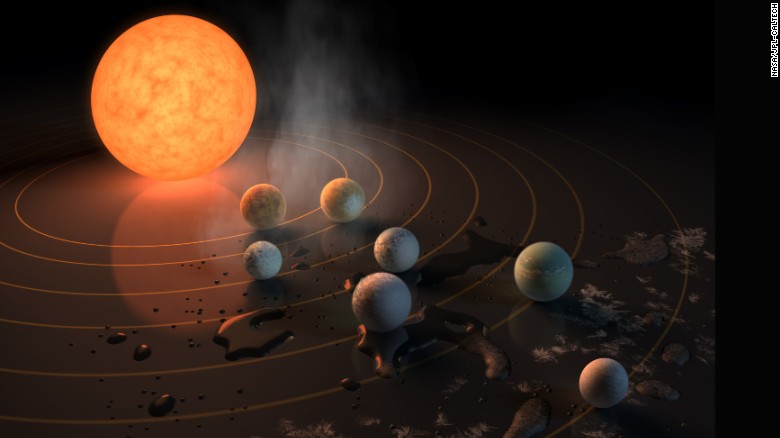Astronomers Discover 7 Earth-Sized Planets Orbiting a Nearby Star
Recently, astronomers discovered 7 earth-sized planets orbiting a nearby star forty somewhat light years away. These findings were announced at the news conference at NASA headquarters in Washington, where astronomers suggested that these planets could potentially support life due to their content. Discoveries as these are very rare, for it is unusual to find planets outside our solar system that could possibly sustain life. It is especially rare to find seven of these planets orbiting the sam e star! They were found to be orbiting the dwarf star called Trapist-1, located in the Aquarius constellation. Trapist-1 appears to be at least three times larger than our sun. This could indicate that radiation in this solar system is much stronger than in ours, which is one of the reasons why astronomers believe that only around three of these planets may actually be able support life. The other four lie in the uninhabitable zones of their solar system. This means that they lie either too close or too far from their sun, causing them to be either too hot or too cold, and the’d be especially uninhabitable with the intense radiation in this solar system. This pretty much sums up what we know about these seven planets, but scientists are hopeful that technology will have advanced enough in the future to possibly visit them. Although this will be very hard, because even though forty light years doesn’t seem too far, it would take us millions of years to reach this star system, but as of right now, it is the best target to search for life beyond our solar system.
e star! They were found to be orbiting the dwarf star called Trapist-1, located in the Aquarius constellation. Trapist-1 appears to be at least three times larger than our sun. This could indicate that radiation in this solar system is much stronger than in ours, which is one of the reasons why astronomers believe that only around three of these planets may actually be able support life. The other four lie in the uninhabitable zones of their solar system. This means that they lie either too close or too far from their sun, causing them to be either too hot or too cold, and the’d be especially uninhabitable with the intense radiation in this solar system. This pretty much sums up what we know about these seven planets, but scientists are hopeful that technology will have advanced enough in the future to possibly visit them. Although this will be very hard, because even though forty light years doesn’t seem too far, it would take us millions of years to reach this star system, but as of right now, it is the best target to search for life beyond our solar system.
By Lucy Loprete
There are no comments yet
Why not be the first